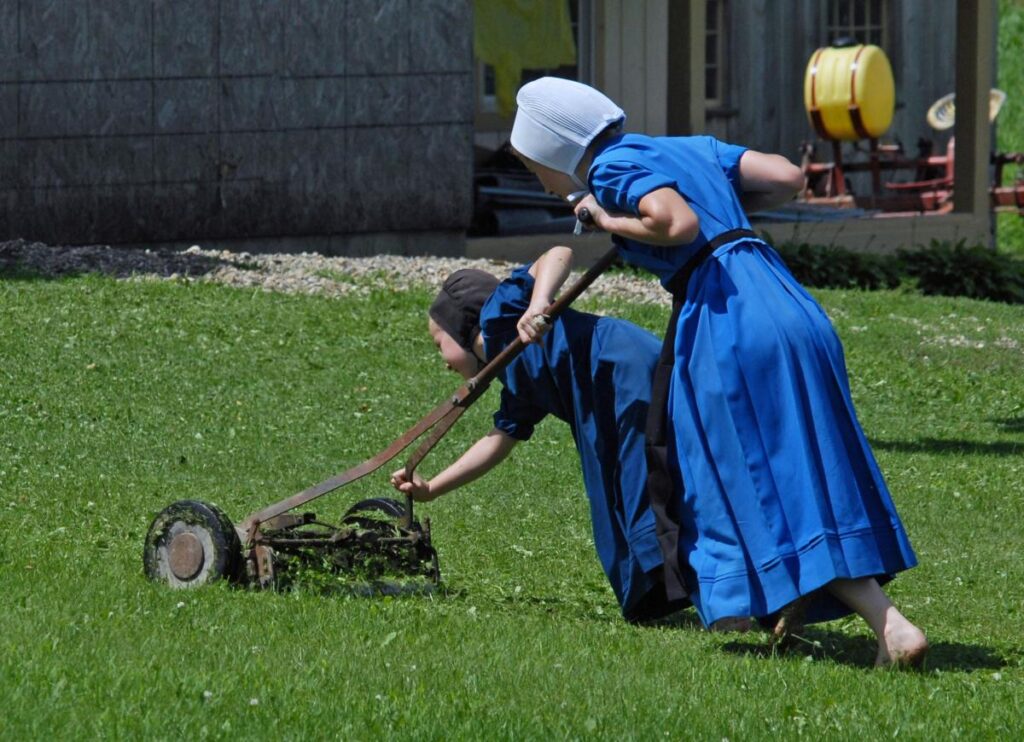In my old neighborhood in South Tampa, the landscape was defined by an opulence that reflected its affluent residents and sprawling estates. The fragrant aroma of jasmine filled the air, accompanied by the incessant chatter of cicadas as dusk settled in. At around 7 PM, evening walks revealed vibrant green lawns, meticulously tended under the vigilant watch of sprinklers, each one collaborating in a routine that signified the wealth and social status of the homeowners. Amidst this sea of grandeur stood one man, dubbed “the holdout,” who resided in the lone smaller house, which contrasted sharply with the opulent McMansions around him. The terminal state of his property, with its overgrown grass and discarded machinery, set him apart from the pristine façades of his neighbors. Though he might have been unpopular among them, the irony lies in the fact that his wild lawn was perhaps the most genuine offering to nature in that meticulously curated environment.
Historically, America’s obsession with green, manicured lawns can be traced back to medieval times when only the wealthy had the means to maintain such spaces, employing servants for the task. The routine and expense of maintaining a lawn was a privilege. Fast forward to the post-World War II era, when ownership of homes and lawns became symbolic of the American dream. This change heralded a shift where streets became lined with manicured lawns, fueled by a surge in marketing for lawn care services and products. Elevated standards about aesthetic appeal and community responsibility emerged, pushing individuals to ensure their lawns conformed to specific expectations. Little did most know that as they embraced this norm, the natural world was narrowing down to single-species grass and unsustainable practices that disregarded a more biodiverse landscape.
As the article unfolds, it becomes clear that such practices come with a heavy environmental cost. Lawns, often perceived as benign, contribute negatively to local ecosystems. The trend of monoculture—cultivating a single grass species—takes a toll on biodiversity and wildlife, culminating in habitats that do not support vital species like bees. These insects, essential for pollination, suffer from pesticide exposure that deeply disrupts their populations and the ecosystem at large. Moreover, the maintenance of these lawns is not only environmentally unsound, but also significantly inefficient, resulting in staggering gas emissions and carbon footprints equivalent to extensive travel by jet. The inherent irony is that while homeowners seek the American dream through pristine lawns, they often contribute massively to environmental degradation, further exacerbating the climate crisis.
Water consumption associated with lawn care adds another layer of complexity to the issue, particularly in arid regions where scarcity is already a concern. For instance, in places like Arizona, maintaining green lawns siphons off vital water from rivers, which has long-lasting biological and economic consequences. This water not only undergoes extensive treatment processes, adding to carbon emissions, but its diversion can harm local ecosystems profoundly. As more homeowners begin to adapt to drought-resistant alternatives, a real opportunity emerges to reimagine what lawns could look like, shifting away from traditional, resource-intensive grass to more sustainable, ecologically friendly designs.
My perspective on lawns has undergone a significant transformation in recent years. What was once seen as a badge of honor—a perfectly manicured property—has revealed itself to be an ongoing battle against nature. Each mowing session felt like an act of war against those resilient blades of grass, which had far more to offer than mere aesthetic appeal. Encountering the natural regeneration process evokes a sense of liberation, pushing back against the societal pressure to conform to the polished ideals of suburbia. Deliberately allowing your lawn to thrive in its natural state can lead to a harmonious existence with nature and yield visible benefits, such as attracting local wildlife.
Taking steps towards rewilding your lawn doesn’t necessitate radical upheaval; it can start small. By researching native plants suited to your environment, homeowners can gradually introduce diversity into their grassy spaces, creating a robust ecosystem. It’s essential to steer clear of invasive species often purveyed by garden centers, which can further disrupt local flora and fauna. Over time, cultivating an environment conducive to pollinators and other beneficial creatures can lead to flourishing wildlife that enhances the beauty and health of the property. In choosing to forgo excessive lawn care expenses, homeowners can embrace a lifestyle that not only mitigates their carbon footprint, but also contributes positively to local wildlife recovery and the broader fight against climate change.
Ultimately, the choice to reject traditional lawn care practices is an opportunity to reshape our relationship with nature. Transitioning towards a more eco-friendly approach not only benefits the environment but transforms the landscape into a sanctuary for wildlife. By allowing nature to reclaim space and promoting local ecosystems, we can enrich our communities while supporting the planet in meaningful ways. Now more than ever, it’s vital to recognize that our roles as caretakers of the Earth can take many forms, and each small decision has the potential to create significant positive impacts in the face of environmental challenges. In doing so, we can begin to dismantle the legacy of the “spinning blade of death” and replace it with vibrant, life-giving spaces that echo the promise and beauty of the natural world.

